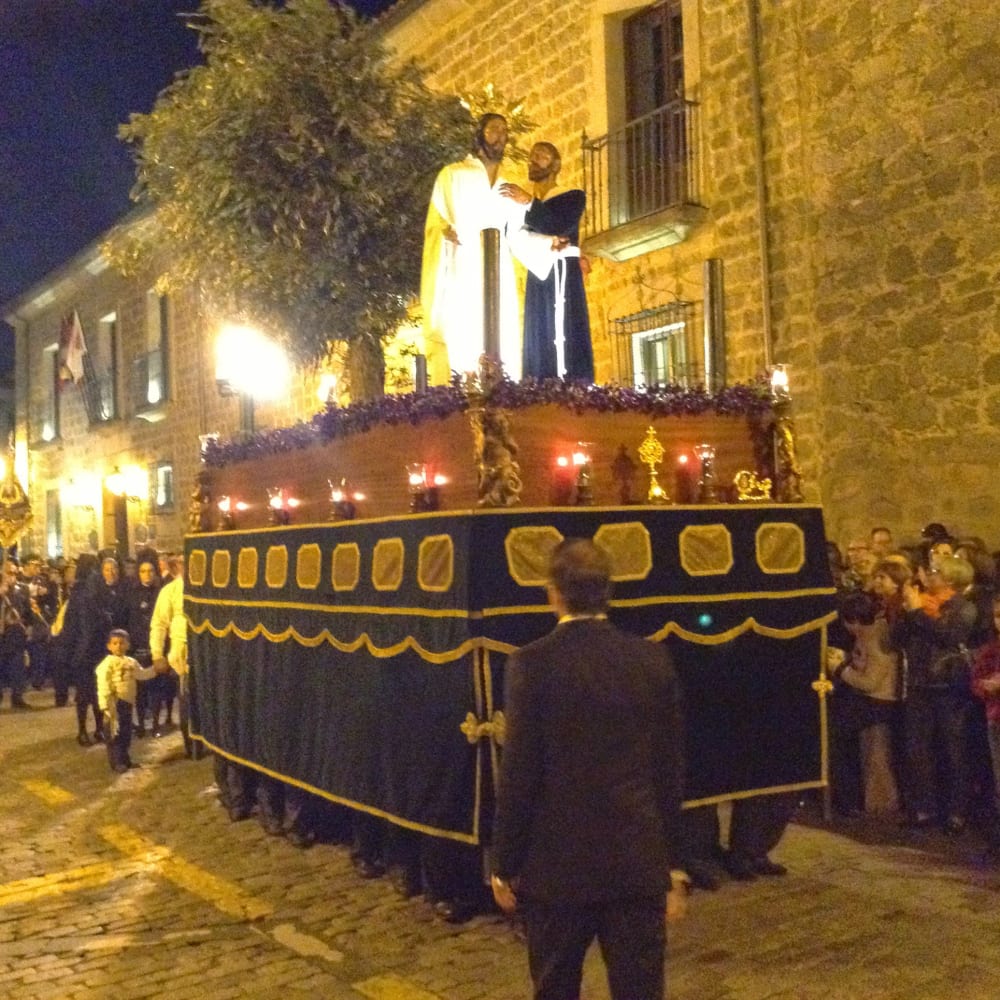Three Kings Sale - Up to 40% Off! Shop Sale
Semana Santa, The Soul of Spain
Don Harris | March 2016




In a few weeks, as Easter approaches, towns and cities across Spain will be immersed in the striking ceremonies and processions of Semana Santa, or Holy Week, commemorating the last few days leading up to Easter.
Semana Santa expresses the heart and soul of Spain. Semana Santa is not a show, nor is it designed to be a tourist attraction. Throughout the preceding year, both the physical and spiritual preparations involve hundreds of people in each town. It just as much an expression of community as it is of devotion. And you don't need to be religious to appreciate the beauty and artistry of these celebrations - there is something profound about a town or city coming together in this way that transcends your personal beliefs.

In many towns elaborate pasos, or heavy wooden platforms, are brought out by the local parishes to recall the last few days of the life of Jesus prior to his crucifixion. Many of the sculptures stretch back many generations and the pasos lie in repose in the local parishes all year long. On the appropriate day during Holy Week, robed parishioners strain to lift and carry the venerated life-like images through the town on a set route that can take many hours. Each parish has a brotherhood of penitential men and boys who are committed to shoulder this immensely heavy burden in procession during Holy Week.
Every town and city throughout Spain has her own rendition. One of my favorites occurs in the ancient walled city of Zamora in Northern Spain, near the Portuguese border. It is a city filled with priceless 12th century Romanesque churches. The tone of their Semana Santa celebration is very somber. To this day, my wife Ruth and I can recall looking down from the battlements about midnight and seeing a long candlelit procession headed toward the city gate. It was a remarkable sight.
In Zamora most of the citizens, from toddlers to retired people - called jubilados in Spain - are involved in the preparations. It is a binding communal event. If you would like to share in this amazing experience I strongly recommend that you make a reservation for the Zamora Parador, a restored 15th-century Renaissance palace, with medieval touches, including suits of armor, tapestries and interior stone walls. The 12th-century Zamora Cathedral is 9 minutes' walk away. However, do it right now for next year, 2017. I am sure most of the rooms are already booked at about $125 per night – not bad for a palace!
On the other hand, if you were to go to Andalucía in southern Spain you would have quite a different experience. Sevilla has a huge and festive Semana. The pasos are equally as beautiful and refined as the North. The cofradias, the men of the brotherhood who carry the massive pasos on their shoulders, are equally devout as in Castile. But Sevilla is an elegant place, kissed by the sun. As you can imagine, it is hard to capture the severe piety of a place like Zamora when you are surrounded by avenues of citrus trees laden with oranges, spectacular purple bougainvillea, and deep red geraniums all surrounded by palm trees. Sevilla is by nature festive.

Yet another amazing Semana Santa is located in the cliff town of Cuenca with its dramatic hanging balconies. It is only a two-hour drive from the Barajas Airport in Madrid, yet it definitely is another world. Their weeklong celebration is in many ways similar to other towns', but if you stay by the plaza up the steep hill in front of the Cathedral, you will find the ancient cobblestone streets very narrow and the processions are close enough to touch. Spectators are only two or three deep at a maximum.
Another dramatic feature of Cuenca processions is the presence of scores of drummers in traditional garb, whose muffled snare drumming heightens the intensity of the processions. Good Friday morning is an experience you will never forget, as the life sized statue of Jesus arrives in the plaza and the hundreds of drummers begin to mock him, representing the crowd at his crucifixion.
If this were not enough to recommend this beautiful city, during the day is the international medieval religious music festival. Choirs and musical ensembles come from all over Europe, from Belgium and Germany as well as Spain's El Escorial, to sing at various chapels during the day. As a result, on the same day you attend a moving musical performance, then stop for tapas at a local café then get ready for the processions in the evening!
The Parador hotel in Cuenca is a restored 16th-century monastery, just a stone’s throw from the Cathedral. On the other hand, we found rooms in an ancient dormitory which was just steps from the old Norman Cathedral.
These are just a few of the mesmerizing and beautiful Holy Week celebrations that occur all across Spain. I can think of no better way to experience the living traditions of ancient Spain than by experiencing Semana Santa. It is a week of beauty, tradition, celebration, devotion, family and community that goes to the heart of what it is to be Spanish.

